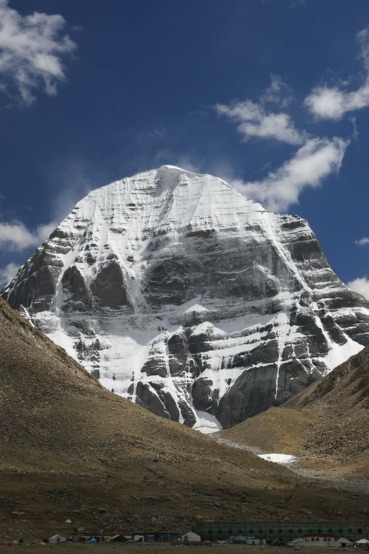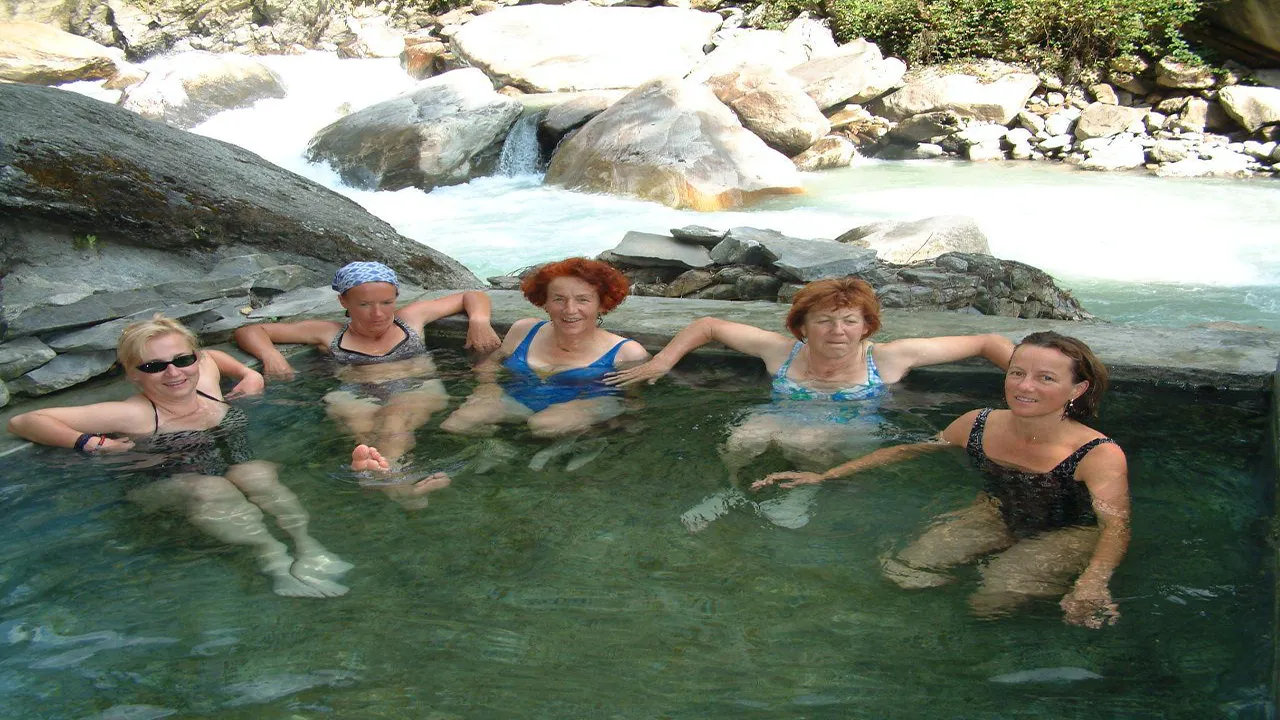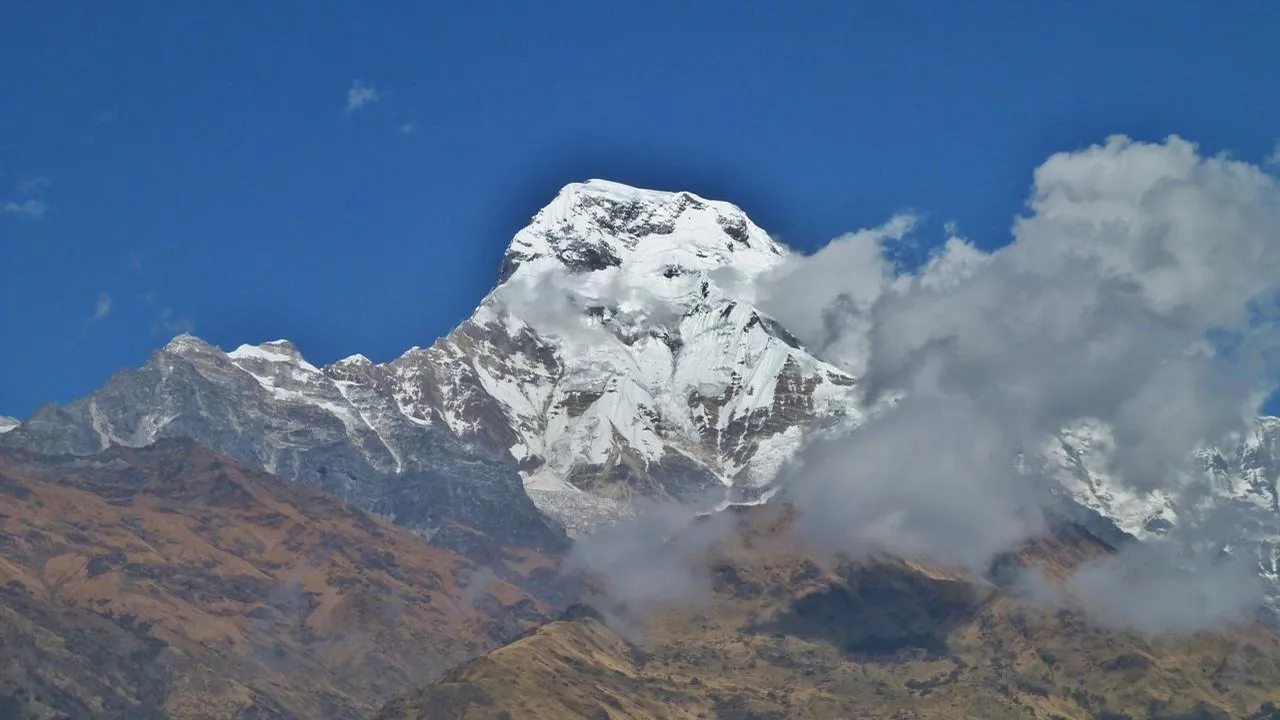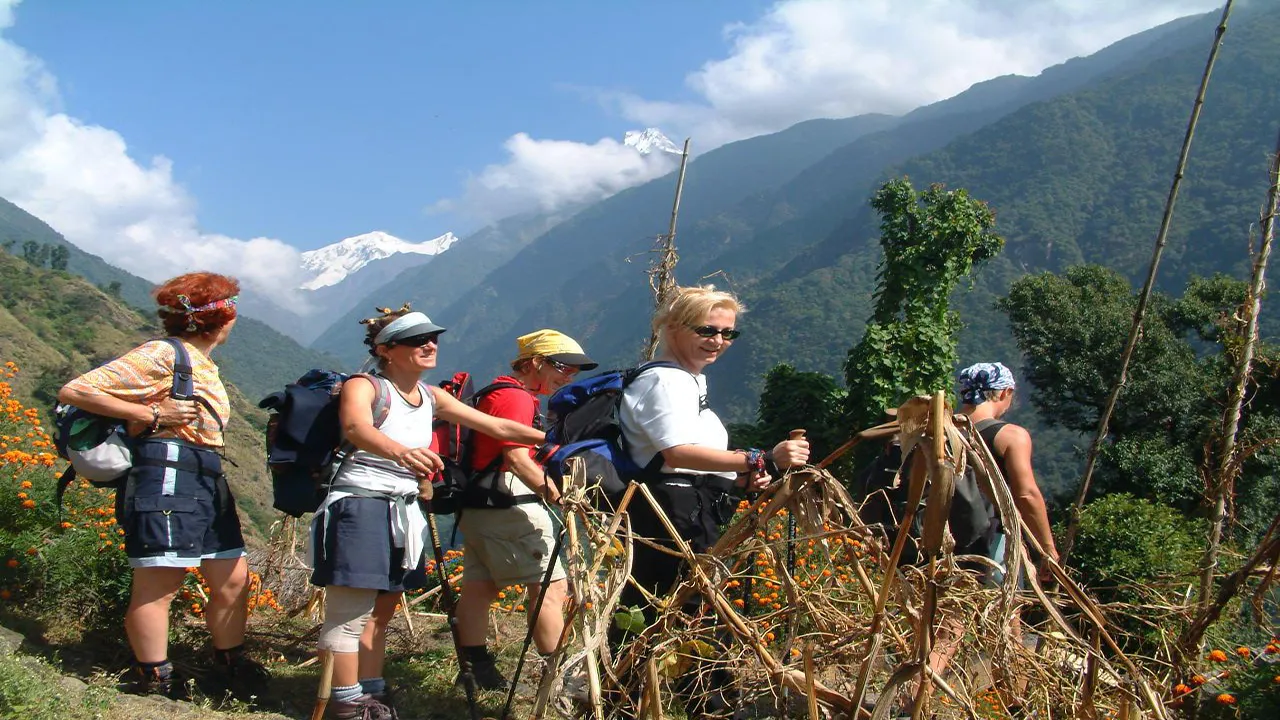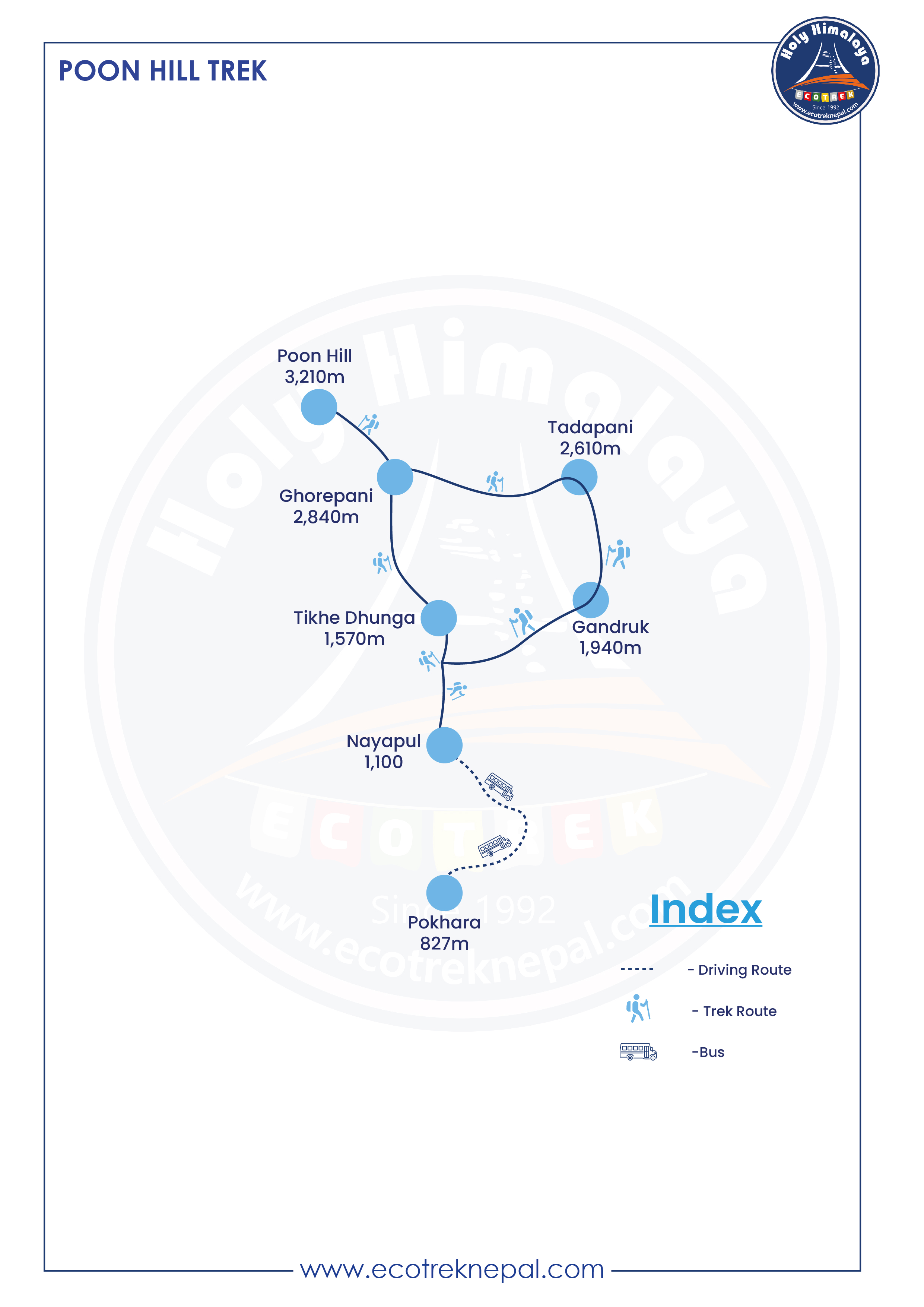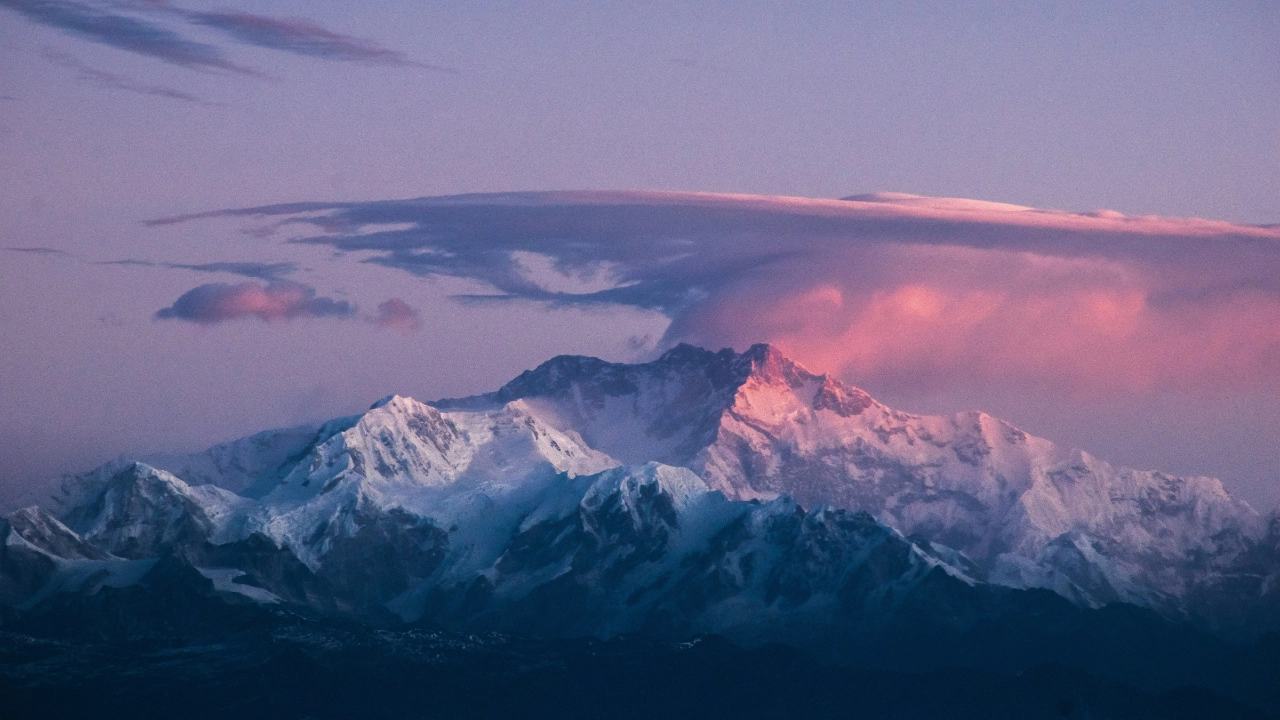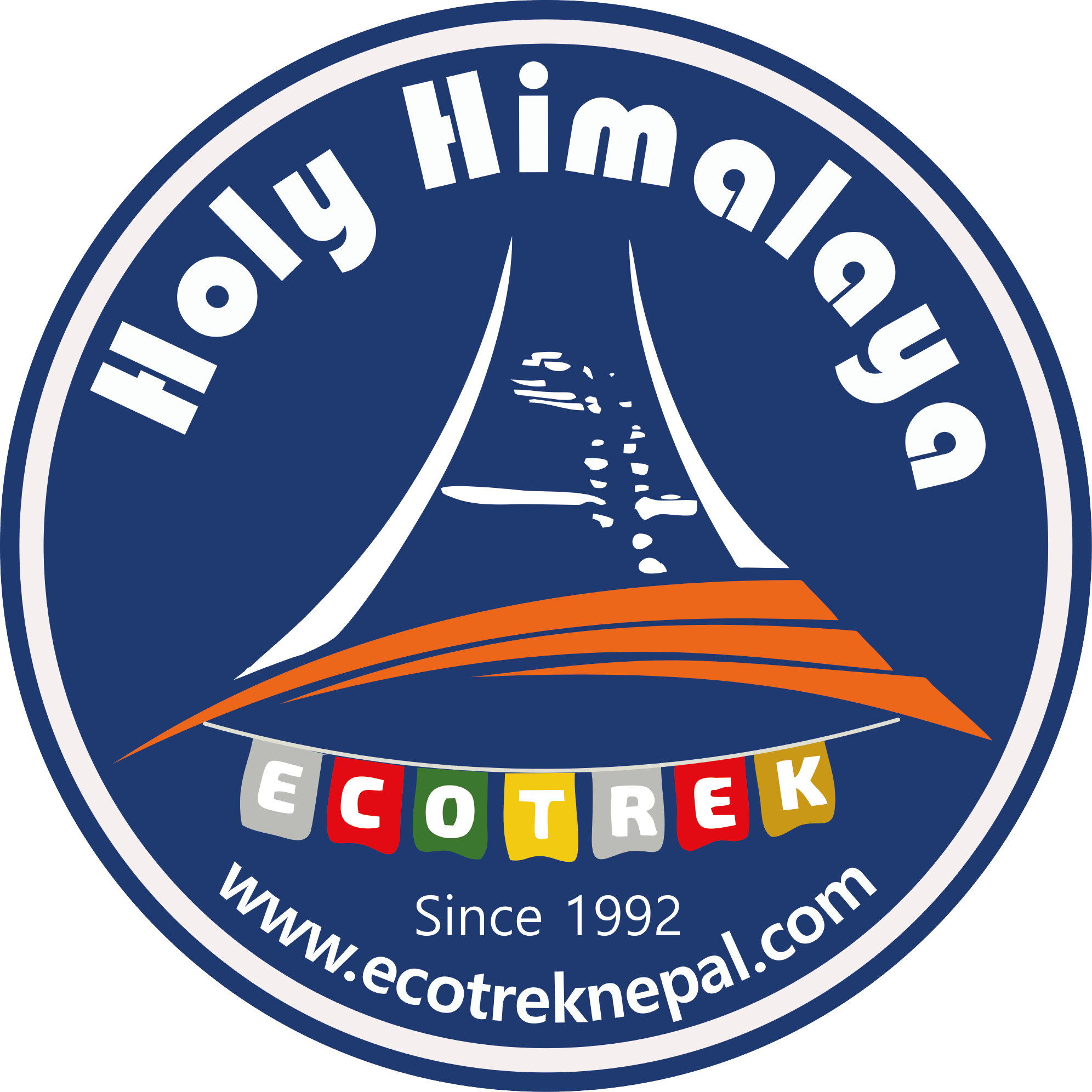
Poon Hill Trek
Tour snapshot
5 Days
2 persons
Nepal
Annapurna Region
Overview
The Poon Hill trek is one of the most popular and easiest treks in Nepal. Saying that doesn’t mean you can go straight from your couch to the mountains. It takes a minimum of 3 days and a maximum of 5 days to complete. This trek has well-marked trails, and there are tea houses and hotels throughout the trail. This trek has all the facilities required and is done in the human settlement area, so there is no high risk.
This trek is one of the most famous, least time-consuming, and easiest trekking routes in the Annapurna region. Most of the region covered by the Poonhill Trek is in the Gurung settlement areas, and they have the best hospitality services. The mountain vistas, floral diversity, terraced farms, rural ambiance, and tranquil setup provide for a wholesome trekking experience.
The trail is embellished with natural attractions like stunning waterfalls, terraced fields of rice farming, thrilling suspension bridges, and beautiful villages. The vistas of amazing mountains like Annapurna I (8,091 m), Annapurna South (7,219 m), Annapurna II (7,937 m), Annapurna IV (7,525 m), Macchhapuchhre (8,091 m), Dhaulagiri (8,167 m), Tukuche Peak (6,920 m), Nilgiri (7,061 m), Himchuli (6,441 m), Dhampus (6,012 m), and many more peaks will accompany the trekkers throughout the trek.
Deurali Pass and Tadapani Hills are the best vantage points to observe the serene and beautiful Himalayan ranges. The traditional Gurung Village, Ghandruk, and Magar Village, Ulleri, are the pauses in the timeline. The houses in these villages are built in traditional styles with stones, stone-paved walkways, and very welcoming people, yet contemporary amenities are the reasons these villages are one of the must-visit places in the world. These villages are the perfect places to observe the lifestyle and cultures of the Nepalese. The villages are adorned with colorful Buddhist prayer flags, enhancing the beauty of these places even more.
Poon Hill Trek can be done in any season, but October to November and March to April are considered to be the best seasons. The sky is clearer and the cold is bearable in this season; additionally, the forests are adorned with rhododendron flowers, making the trek even more charming. The temperatures in these months range from 28 degrees Celsius to 12 degrees Celsius. The weather in Poon Hill will be pretty cloudy and chilly during the monsoon and winter, with slippery trails and heavy snowfall, yet it can be done with a little more planning and preparation.
Therefore, the Poon Hill Trek is the ideal trek for people who have time constraints yet want to experience Nepal and the raw Annapurna region. Anyone who can walk continuously for a couple of hours without any serious physical obstacles can go on this trek and enjoy the natural and cultural riches of Nepal.
Highlights
- Breathtaking views of snow-capped mountains
- The beauty of the traditional villages of Nepal—Ghorepani, Tadapani, and Ghandruk
- Stunning sunrise from Poon Hill
- Astonishment at dense Rhododendron forest
- Cosy and rustic tea houses
- A diverse range of landscapes
- Interact with different ethnic communities
- Experience the warm, hospitable nature of the locals.
Itinerary





Included/Excluded
Service Fee Only, Explore Nepal Fully!
Select Dates
{{type.name}}
{{type.display_price}} per person
Guests
Extra prices:
- {{total_price_html}}
- {{pay_now_price_html}}
FAQs about Poon Hill Trek

A moderate trek requires a hike of 5–6 hours per day. Pooh Hill is a moderate trek, and at higher elevations, there is always a greater physical demand; the rhythm of walking can offset this strain. You should be in good health condition and moderately fit with high determination. However, for those treks, it's best if you have some weeks of training prior to embarking, by jogging and climbing stairs, which increases your strength and stamina. Previous hiking experience would be helpful, but not technical experience.

The Mardi Himal Trek is a fascinating combination of teahouse trekking and camping. At the campsites, basic teahouses are available, which provide simple accommodations. As there are teahouses available, camping is also an option for the more adventurous. The food, as with most Nepalese treks, is basic but nutritious. Expect a concise menu comprising Dal Bhat, momos, noodles, and bread—all local staples that provide the requisite energy for your mountain journey.

For Mardi Himal Trek, there are primarily two permits: the TIMS Card, or the Trekking Information Management System, and the permit to the ACAP-Annapurna Conservation Area Project. These are a must for every trekker trekking to the region of Mardi Himal, therefore guaranteeing effective management and conservation. In addition, no other special permissions are needed for this adventure trek other than these two permission documents. Advance arrangements regarding the attainment of these permits will greatly help in a hassle-free, legitimate trekking event. HOLY HIMALAYA ECO TREK WILL ARRANGE ALL THE NECESSARY PERMITS FOR THE TREK!

The best seasons for the Mardi Himal Trek are autumn, between September and November, and spring, between March and May. During autumn, one can find dry and clear weather conditions, warm sunny days, and excellent visibility—a pretty ideal time for trekking in the Annapurna region. Spring is also an excellent time to go trekking with minimal chances of weather hazards. However, these peak seasons tend to be busier on the trails. On the other hand, December to February is also considered a good time with fewer crowds and better visibility, but with proper precautions against cold weather.

Electricity and phone connectivity may not be in all parts of the Mardi Himal Trek. Villages that do not have electricity promote teahouses for battery charging, which usually run on solar power. Along the trail, there are some mobile networks such as NTC and Ncell; however, it can be patchy or even high altitudes without coverage. Sometimes network connectivity might be full but unreliable, and therefore the trekker needs to change locations for decent signals over remote areas. When available, mobile internet services usually come in the form of 3G networks. Some teahouses offer Wi-Fi, but be prepared for an added cost for the service.

